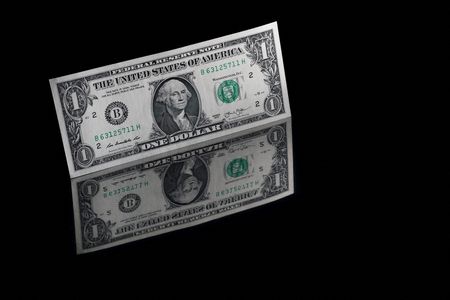
LONDON (Reuters) – The U.S. dollar rose to a five-year high versus the yen on Tuesday, boosted by expectations of U.S. Federal Reserve rate hikes, as investors bet that the fast-spreading Omicron coronavirus variant would have limited economic impact.
In the second trading day of 2022, global markets extended the upbeat moves seen on Monday.
The dollar’s gains were helped by a rise in U.S. treasury yields, as investors bet on the Fed raising rates, with the U.S. 2-year and 5-year notes soaring to their highest since March 2020.
At 0839 GMT, the dollar index was up 0.1% at 96.278, having exceeded Monday’s gains to reach a six-day high of 96.335 earlier in the session.
Versus the yen, the dollar was up 0.4% at 115.835, extending its overnight gains to reach its highest since January 2017.
The euro was little changed versus the dollar, at $1.1296.
Investors see Omicron as potentially less disruptive to the global economy than previous variants, following studies suggesting that the risk of hospitalisation is lower.
“As Omicron is not translating to severe infection and death, the initial risk off shock has been completely erased and markets are focused on the supply chain impact and inflationary narrative,” wrote Elsa Lignos, global head of FX strategy at RBC Capital Markets, in a note to clients.
Asia’s factory activity grew in December as companies withstood rising global cases of the Omicron variant, though persistent supply constraints and rising input costs clouded the outlook for some economies.
“The scaling back of fears over Omicron disruption for the global economy has encouraged market participants to refocus on the prospect of major central banks tightening policy in the year ahead,” wrote MUFG analyst Lee Hardman in a note to clients.
“USD/JPY continues to be the most tightly correlated G10 pair to US yields.”
Money markets have fully priced in a first U.S. rate increase by May, and two more by the end of 2022.
Risk-sensitive currencies were generally up in early European trading. The Australian dollar, which is seen as a liquid proxy for risk appetite, was up 0.2% at $0.72105, even as hospitalisation in the state of New South Wales surpassed the record levels seen during the Delta variant outbreak.
The New Zealand dollar was up by less than 0.1% on the day.
Britain’s pound was steady at $1.3485, while euro-sterling edged down to its lowest since February 2020, 83.675 pence per euro, shortly after 0800 GMT.
British Prime Minister Boris Johnson said on Monday that the country would “continue with the path that we are on” in terms of measures to limit the spread.
Bitcoin remained subdued, up 0.2% on the day at $46,521.49, still significantly below its latest all-time high of $69,000 reached in November.
China has released pilot versions of its digital yuan wallet application, the “e-CNY (Pilot Version)” app, as the country’s central bank steps up its push to develop its own digital currency.
(Reporting by Elizabeth Howcroft, editing by Ed Osmond)

